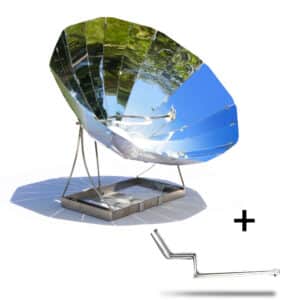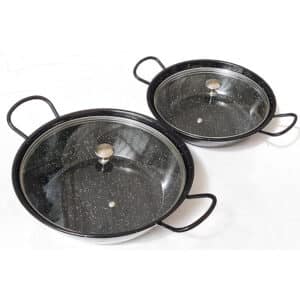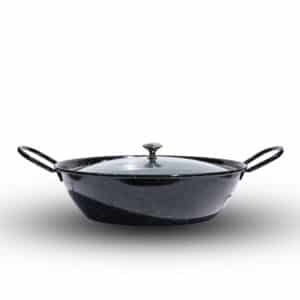the shop

The SUNplicity parabola
The poPOP, foldable Solar Cooker
” It is easy to live with, efficient and compact and opens like a flower in 1 minute without tools ! It closes just as easily. “
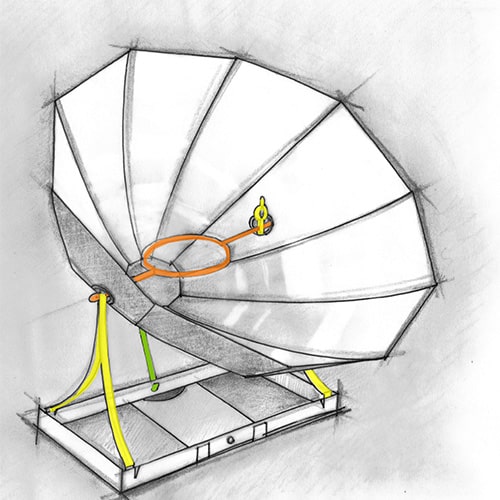
Cooking
Empty, the pot will heat up to 230°C-446F within 10 minutes on average,
1 liter of water takes ½ an hour to boil.
The heat well distributed is perfect for tasty cooking.
There is no sticking at the bottom of the pot, no burning; this gives extra freedom to the cook.
Materials
The SUNplicty solar cooker is all metallic for longer lifespan.
Some of the aluminum comes from recycling. The SUNplicity is designed to be recycled.
The cooking is healthy and the carbon footprint exemplary.
One of our goals is to ban plastic.
The making
SUNplicity is proud of its local partenships who are all very involved.
SUNplicity aims for sustainability and ethics, both for the environment, and for the people involved.Learn about our partenerships here.
SUNplicity Containers
THE ACCESSORIES
The grey pot
The grey pot, which can be painted black (barbecue paint), is the original SUNplicity pot. We could say that the solar cooker has been conceived with this very pot in mind. It is very light and can be fixed to the folded cooker for easy carrying. Alain Bivas recommends this pot for stews, soups and liquids, as well as to bake cakes, bread, and why not a lamb shank etc, etc…
The enameled steel pan
The enameled steel pan is practical for pies, meat, fish, eggs… as its shape allows tilting to keep the pot level. Alain Bivas recommends the use of a lid. This will increase the heat and enhences the flavor. This will also make very tender moist delicious cooking.
The glass lid
The glass lid gives you good view of what you are cooking. The metalic knob withstands the heat the best.
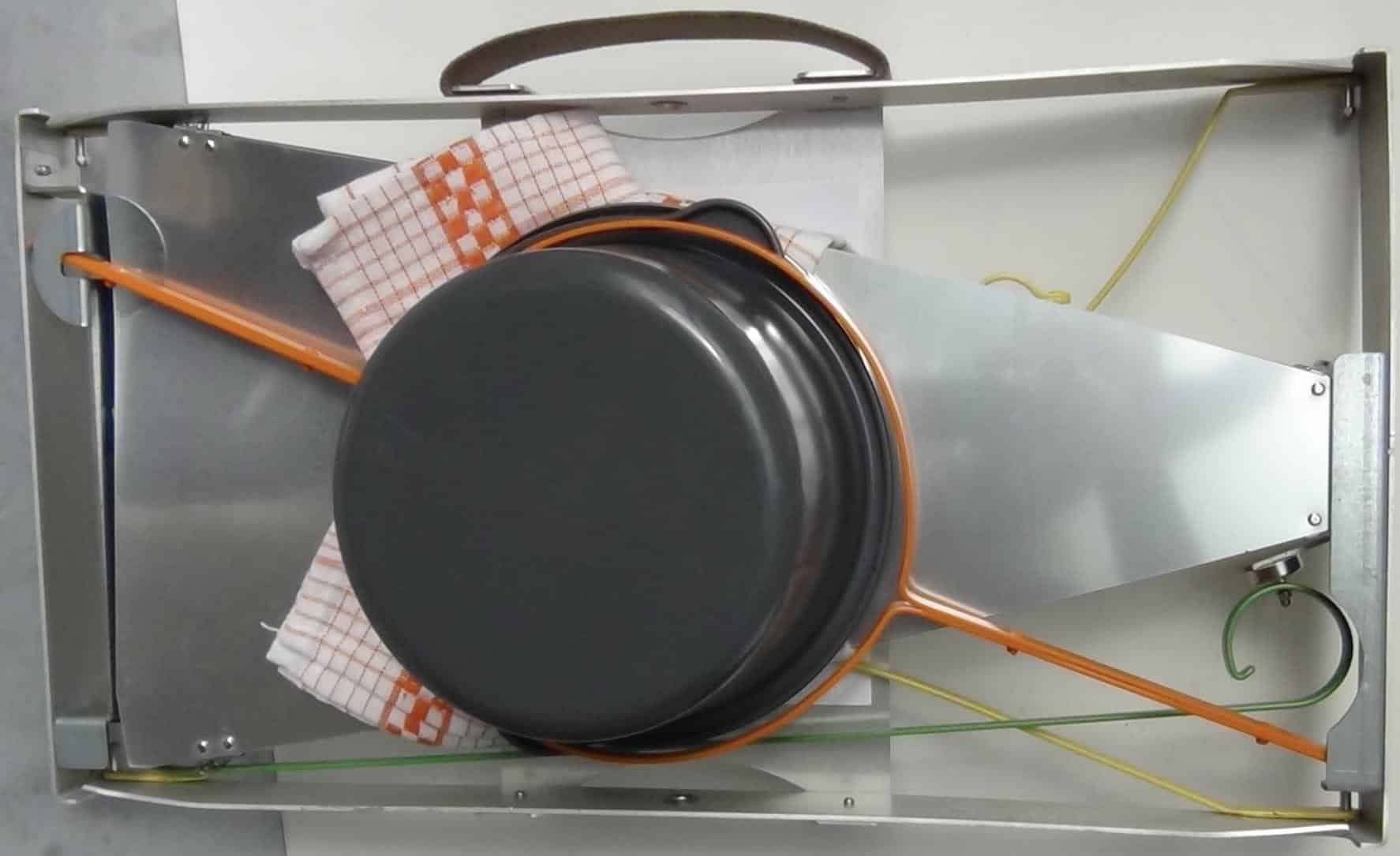
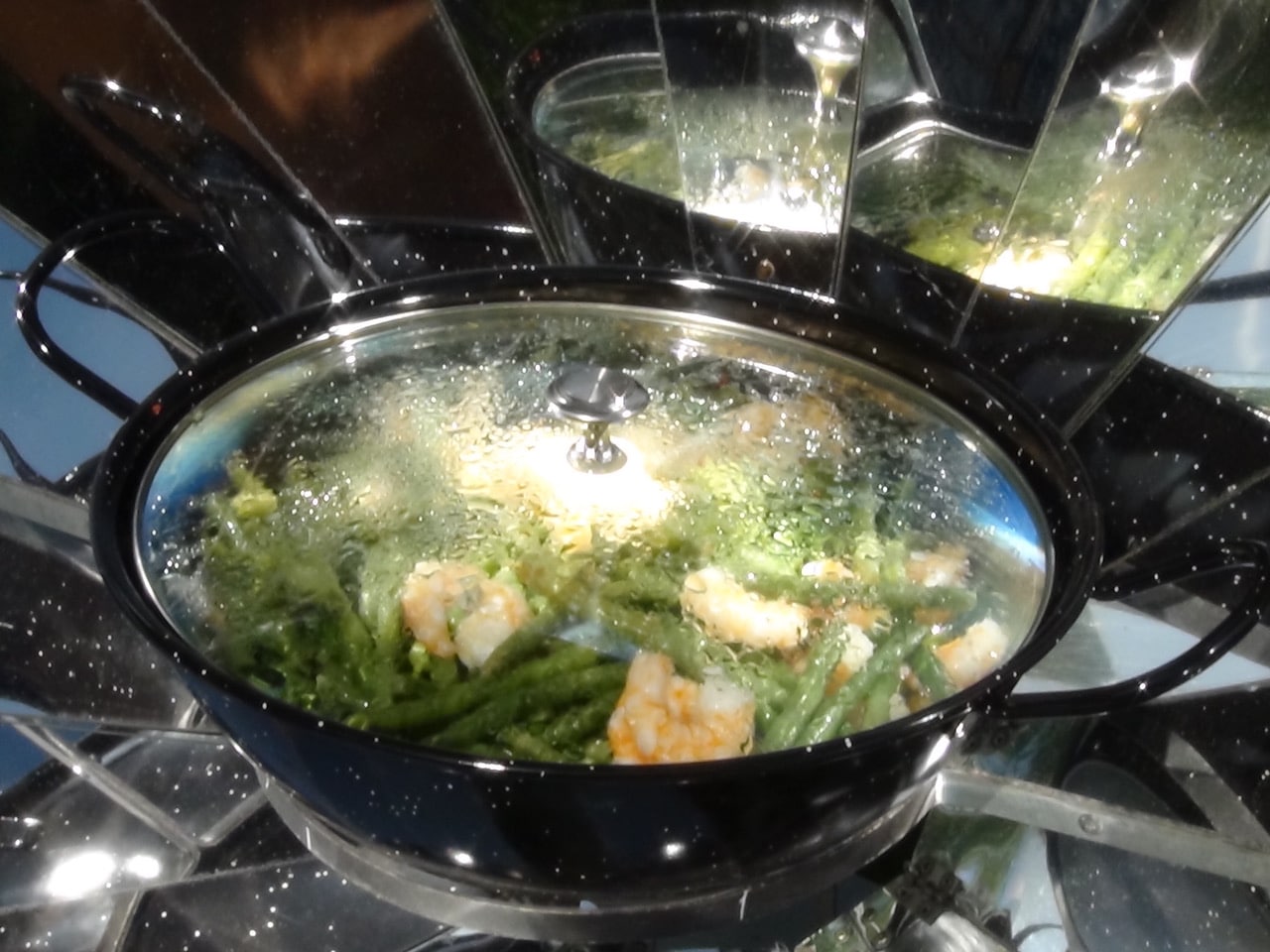
Frequently asked questions about parabolic solar cookers
How does a parabolic solar cooker work ?
Which pots to use for solar cooking ?
How hot can a solar barbecue get ?
Which dishes can be cooked in a parabolic solar cooker ?
Does a solar dish work in winter ?
Is there any danger in using a solar dish ?
What are the advantages of solar cooking ?
Many people think that solar cookers are reserved for poor countries, often located on the equator, where the sun’s rays are at their strongest. But solar cookers are perfectly usable in our latitudes. What’s more, France’s solar deposits enable us to produce electricity using photovoltaic panels, so why not cook food too!
This cooking method has several advantages:
- Free energy
Energy prices are skyrocketing, and given the current economic situation, there’s no sign of that stopping. But sunlight is an inexhaustible source of energy, available to everyone, without distinction. Combined with a traditional stove, a solar dish allows you to take advantage of this gift from the heavens whenever possible, and reduce your electricity and gas consumption. In the long run, the savings will pay for the purchase of a solar cooker and beyond.
- Energy autonomy
A solar dish needs no energy infrastructure to generate high temperatures. It operates off-the-grid. As a result, as soon as the weather’s fine, you can cook outdoors in complete freedom. This is especially true of portable, foldable solar cookers like the Sunplicity. This cooking mode is ideal for motorhome owners, hikers, people who want to be self-sufficient, and so on.

Follow us on social networks, you will find photos, videos and comments of SUNplicity cooking all over the world !


